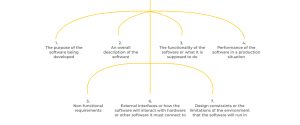Introduction
Creating product documents is a very essential step to guarantee that users can competently handle and manage the given product. Effective documentation can help improve the satisfaction of the user, reduce the costs that are incurred by the support team and it can also meet specific regulatory requirements. Thus, you will find below the tips on how to create the best product documentation.
1. Describe the issue:
Describe the issue that is being addressed in the documentation briefly yet clearly explaining the area of focus. In this case, it refers to the coverage of which aspects of the product? Does it cover the installment, use, or even repair or will it only be installing or merely using it? Identifying the scope is important to with the help of it organize the content.
2. Recognize your Audience:
Recognizing your audience is very essential. Are you writing for the end-users, developers, and internal teams? Supporting the audience through the presentation of ideas is a necessity, which means the content presented should be in line with the audience’s knowledge level.
3. Requirement Gathering:
Accumulate as much required information about the product as possible. This could be specifications of a technical nature, user manuals, problem-solving procedures, and any other information that would be relevant. Consult with the readers such as product managers, engineers, and other support staff for accuracy.
4. Organization of the Content:
This area entails coordinating the content of the documentation. A typical product documentation structure might include:
- Introduction
- Installation Instructions
- Features and Functions
- User Guide
- Troubleshooting
- FAQs

5. Writing Skill:
Besides content, express your ideas in simple and concise language. Minimize the use of industry-specific language, acronyms, and any other proper words that will cloud the reader’s understanding. The content should be as simple as possible so it is recommended to use bullet points, numbers, and short paragraphs.
6. Add visuals:
Integrate Media Design drawings, photographic images, video clips, and screen grabs can be used to enhance the text. Instructions can allow visuals to be incorporated so that choices are made clearer in the document as a whole.
7. Review and Edit:
Review the posted content and ensure that it makes sense and should be left as it is or changes need to be made. Sometimes it is advantageous to enlist the assistance of a person who doesn’t need to with the document in question in order to check for possible mistakes or contradictions. This means that before finalizing a document, recommendations given by other people have to be implemented.
8. Finalizing the document:
Testing and editing the documentation Before finalizing the documentation, follow it as you would have someone else do it. This helps in making steps well-defined and understandable by the users who are to interact with the application.
Conclusion:
Preparing product documentation entails the preparation of comprehensive procedures for use as well as guides in using it. It makes users more satisfied, they do not need to contact support, and it helps to avoid violations of the rules. The scope should be clearly defined, one should know most about the target audience, all the information required for creating documentation should be collected, the content should be logically organized, and the language used should be easily comprehensible, visuals should be used for better understanding, documentation should be reviewed carefully, and the end product should be tested many times. These constitute steps that when followed make it possible to ensure that the users can easily understand and use the given product with confidence.
FAQs
1. What is product documentation?
It is a group of papers that outline how to operate as well as comprehend a product.
2. Why is product documentation important?
It informs the users of how the product should be used hence cutting on expenses of a support call or having noncompliance issues.
3. Who creates product documentation?
Often product technical writers, product managers, and engineers work together to develop product documentation.



